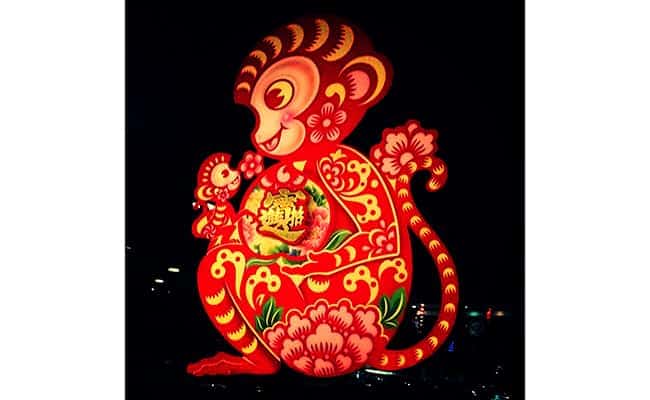Happy Chinese New Year 2016: facts you didn’t know about its celebration
9th February 2016By Justin Chew
It is extremely interesting to experience Chinese New Year away from home. Coincidentally, this is also the first year that Sunderland has marked it with a bigger and better celebration.
In Malaysia, Chinese New Year is always a big celebration – something like Christmas, a time seeped in traditional, family and prosperity.
However, for those who don’t celebrate the New Year, a lot of our traditions and practices would feel odd, out of place and confusing.
Hopefully, this article will clear up some of the confusion and help explain some of the weird and unique quirks we, Chinese, love doing on the Lunar New Year.
Chinese New Year, also called the Spring Festival, is a significant time for the Chinese people, as it marks the end of winter, beginning of spring and the beginning of the new cycle of the Chinese Lunar Calendar.
The legend has it that…:
The origin of the festive comes from a legend set in ancient times when a beast, called the Nian, would come and eat people and animals on the eve of every New Year.
It was said that Nian was deathly afraid of the colour red, bright light, loud noises and was driven away by all of these.
This is why during the Chinese New Year, it is believed to be good luck to wear red and to drive away bad luck with loud noises and sparkling lights.
There are actually 15 days of Chinese New Year, with each day having a significance of something and bring marked with tradition or practice.
One of more significant traditions actually happens before the First Day of Chinese New Year, on the Eve, called the Reunion Dinner.
The Reunion Dinner is a time when whole families would come together for a dinner. It is quite similar to the American Thanksgiving dinner.
The meeting point is customary the residence or choice of the Patriarch or Matriarch of the family, following the husbands side.
On the First Day, people will visit their families houses to exchanging gifts of food and ang pow (Red Envelops).
It is customary for elders or married people to present ang pow, which are filled with money, to young or unmarried people to symbolise the older generation passing their blessing onto the younger.
In Chinese hierarchy, an unmarried person is considered younger than a married person regardless of age.
A tea pouring ritual is also held, where family members would line up in order of their generational hierarchy and pour tea for their elders.
In Malaysia, on the Fifteenth Day, called Chap Goh Mei, there’s a traditional myth where young unmarried ladies in search of their significant other would throw mandarin oranges into the river.
There are twelve years in the Chinese calendar marked by 12 animals which represent the year. This is referred to as the Chinese Zodiac.
The Chinese Zodiac…:
The origins of the Zodiac comes from another legend in which The Jade Emperor, or the Celestial King, ordered all animals to be designated as calendar signs and held a race to determine the order. The 12 animals order in the zodiac was chosen depending on the place they finished at after the race.
There are the Rat, the Ox, the Tiger, the Rabbit, the Dragon, the Snake, the Horse, the Sheep, the Monkey, the Rooster, the dog and the Pig.
It is believed that a person possesses the qualities and traits of the animal in whose they were born.
As an example, we are currently in the 9th year of the cycle, the year of the Monkey. People born on this year are thought to be ambitious, adventurous, witty, intelligent, have a magnetic personality but irritable.
The Chinese are generally very superstitious and a lot of our customs and traditions of the New Year are derived from superstition.
There are practices such as getting a haircut and new clothes before the New Year, because it symbolises a fresh start to the New Year.
Mandarin oranges are seen and exchanged in abundance. This is because the word for mandarin oranges in Chinese sounds like the word for gold and fortune.
The colour red colour symbolises prosperity, that is why it is worn and seen everywhere.
Firecrackers and Lion dances are said to scare away evil spirits and chase away bad luck. This is why the lion costume is designed to be fierce looking, and loud drums and cymbals are played accompanying the dance.
To take advantage of all the good luck and prosperity in the air, gambling is also customary at this time.
Back in Malaysia, in particular, we have a special dish only served during the New Year period, called Yee Sang. It resembles a mix salad using ingredients of many colours.
Everyone gathers around the table and mixes the Yee Sang ingredients together and shout out blessings and hopes for the New Year.
Another superstition is that there is no sweeping or cleaning at all during the First Day, as it is believed that to do so is to sweep good luck away.
The number/amount of four is never given in a red envelop because the word four in Chinese sounds like the word ‘die’ or ‘death’.
Hopefully, you’ll now understand better why Chinese New Year is so important to the Chinese people and why it celebrated the way it is. So, put on something red and join in the fun!
I wish you a happy and prosperous Chinese New Year.






